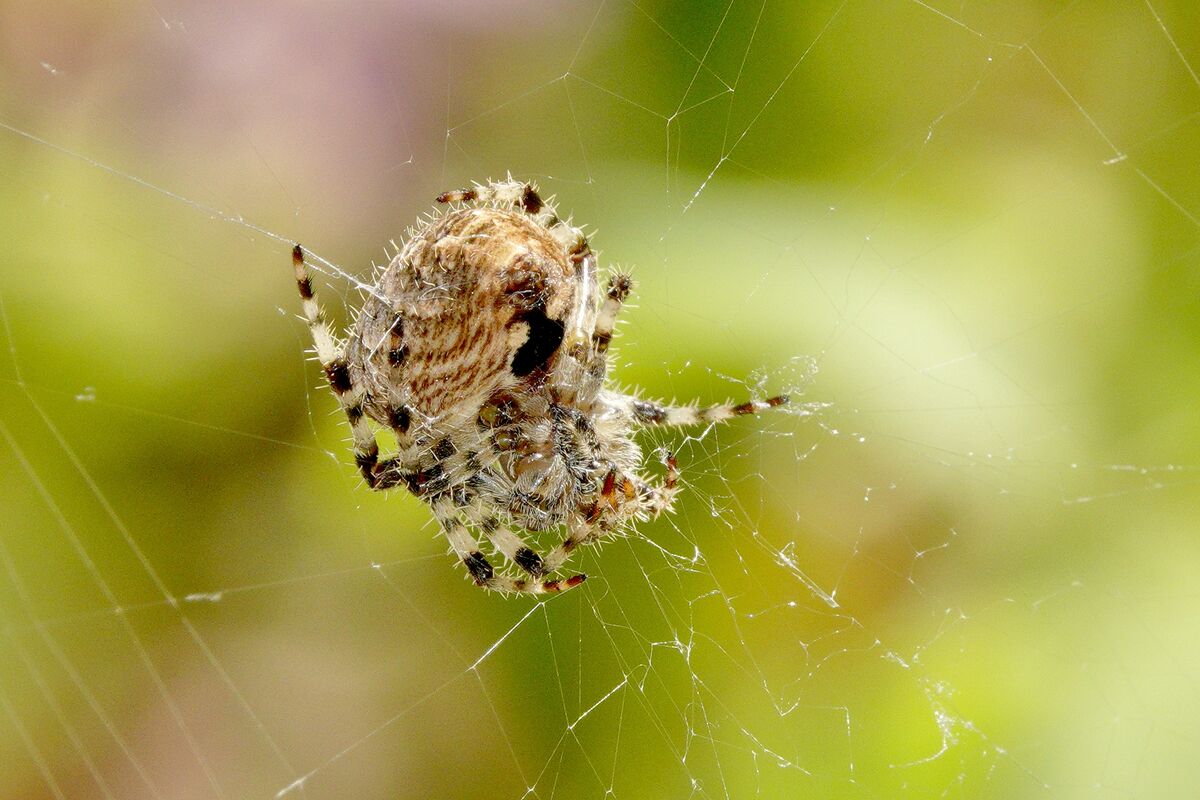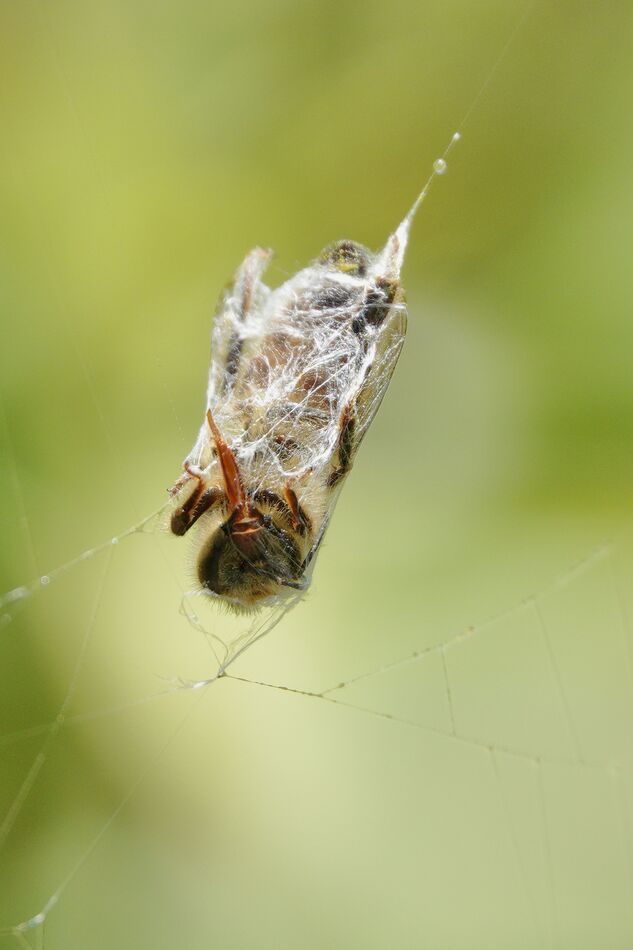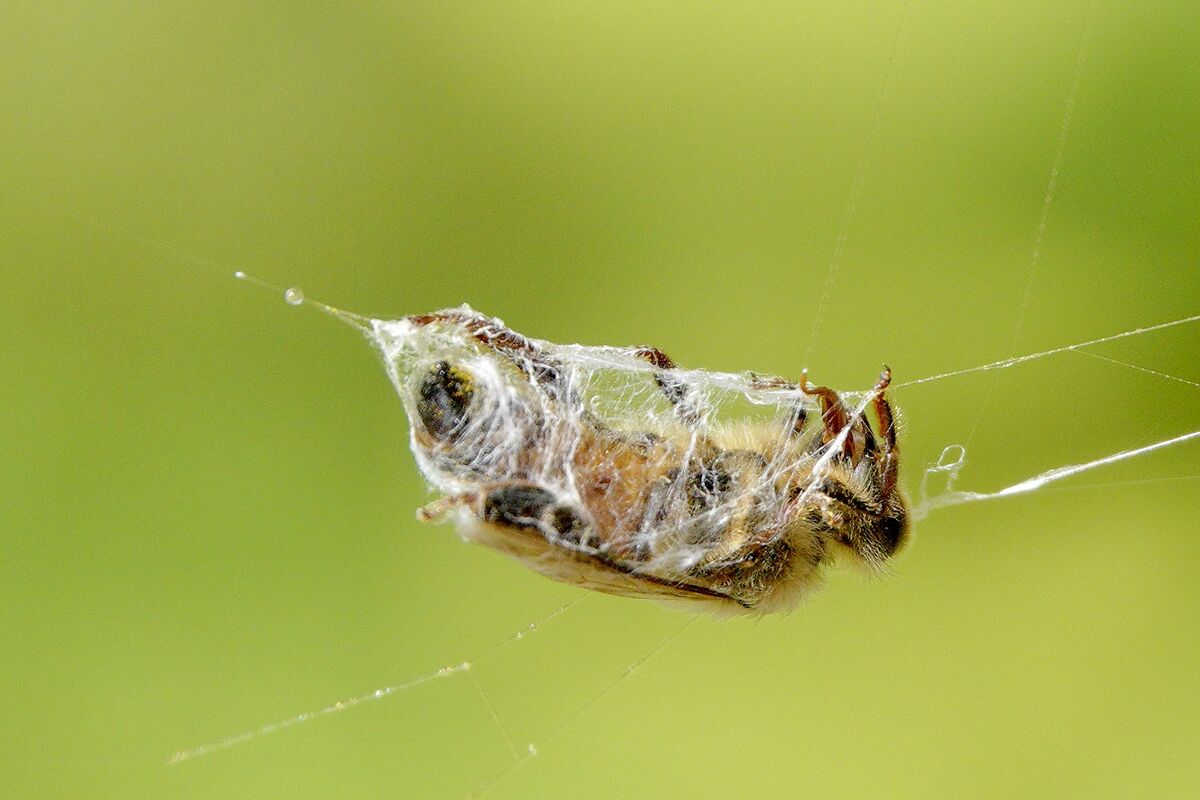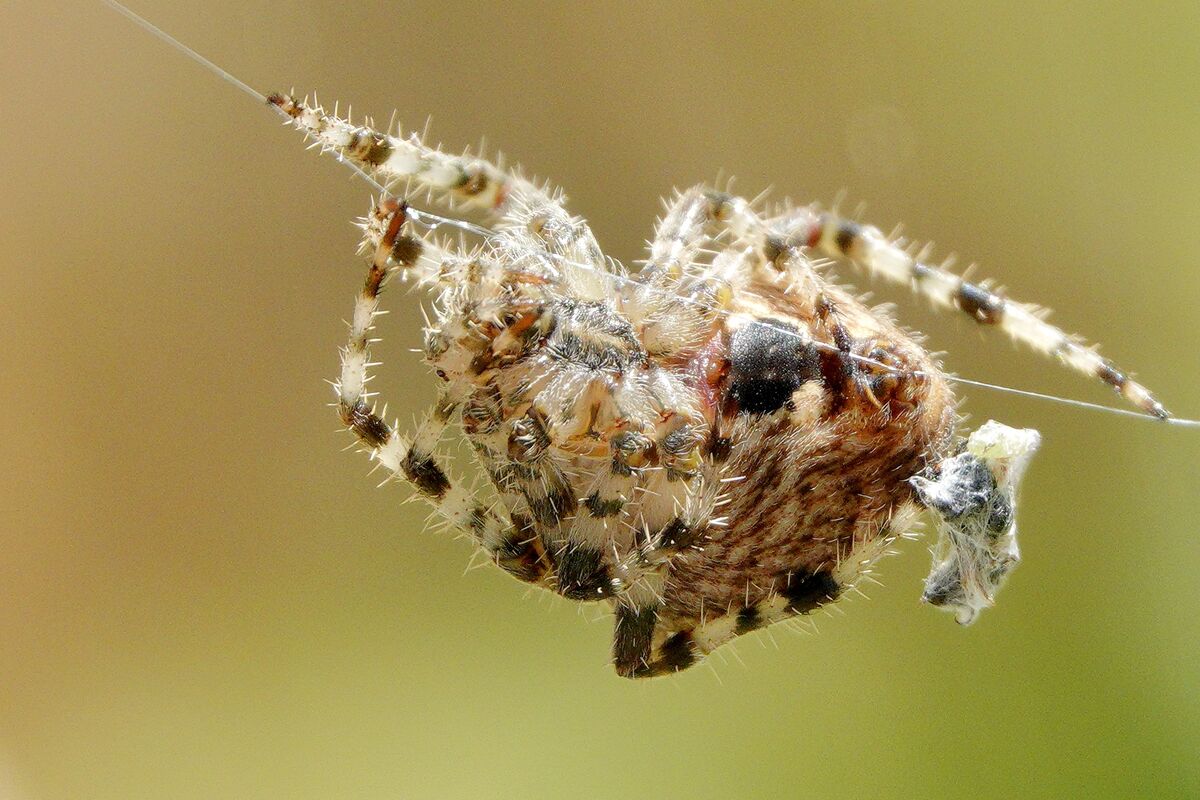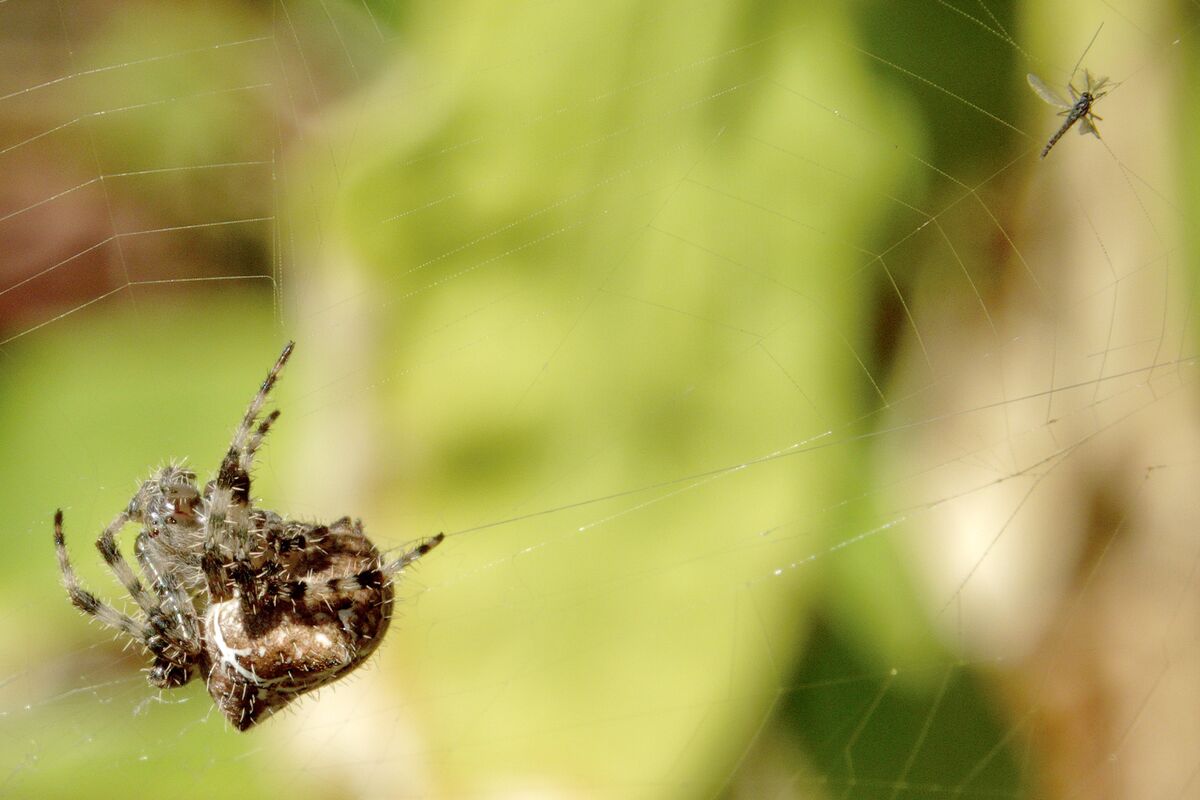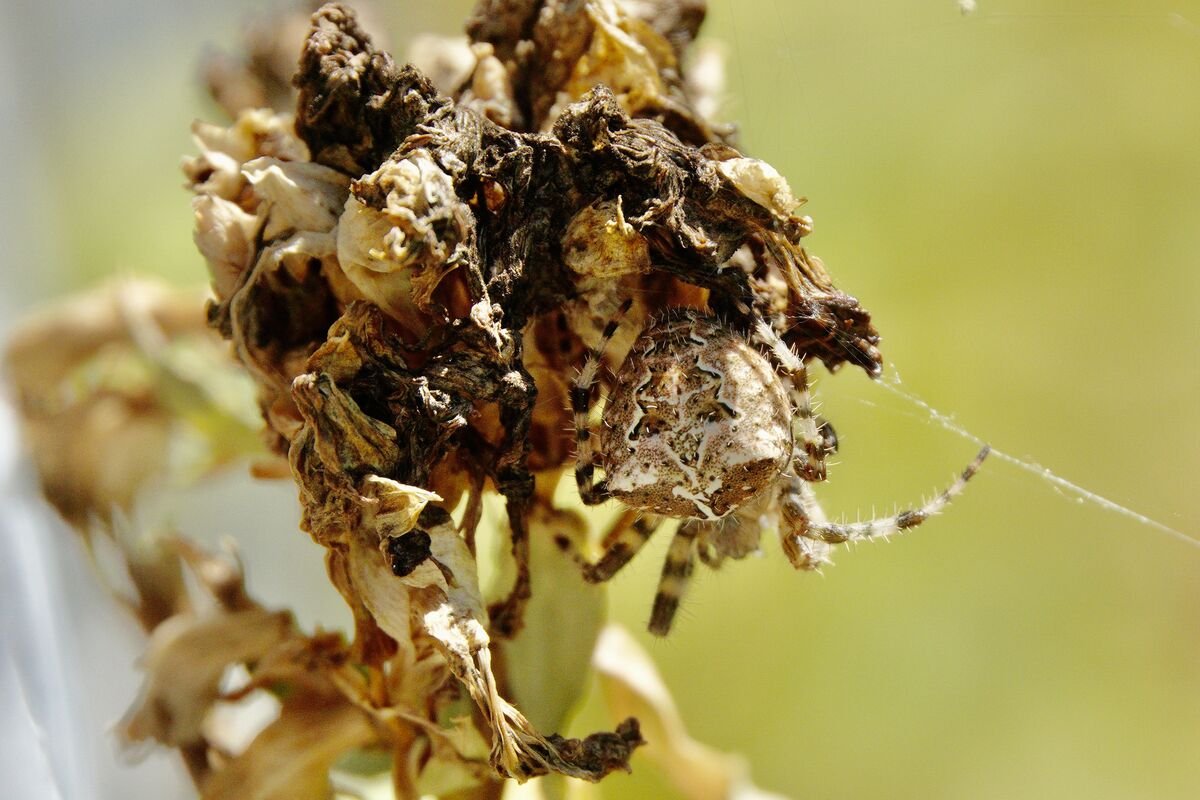Pobrecita Abeja
Sep 16, 2023 16:03:35 #
While on insect patrol over my neighbor's fence I spotted a honey bee wrapped up for lunch by a suspected orb weaver. I looked for the spider for a few minutes and then got the idea to lightly touch the wrappee a few times with a blade of grass. Out came the spider from the bottom of a dying flower on the run to check on his dinner. Here are a few photos of the wrapped bee, another fly like insect in the web and of the spider. When you see the photo of the spider back in the flower you can see how well camouflaged he is and why I did not see him to begin with.
Can anyone please identify the sack of something protruding from the spider's butt?
Sorry for the questions. The tiny insect in the web, is it perhaps a baby damselfly, something similar?
I just checked on it a few minutes ago and the bee had been wrapped more and moved to within a couple of inches of the flower. I guess the spider does not trust me with its dinner.
Dennis
Can anyone please identify the sack of something protruding from the spider's butt?
Sorry for the questions. The tiny insect in the web, is it perhaps a baby damselfly, something similar?
I just checked on it a few minutes ago and the bee had been wrapped more and moved to within a couple of inches of the flower. I guess the spider does not trust me with its dinner.
Dennis
Sep 16, 2023 17:08:34 #
Sep 16, 2023 17:13:16 #
dennis2146 wrote:
While on insect patrol over my neighbor's fence I ... (show quote)


 Re spider, starting to moult?
Re spider, starting to moult?Sep 16, 2023 21:34:17 #
Sep 16, 2023 21:34:39 #
bcheary wrote:

 Re spider, starting to moult?
Re spider, starting to moult?


 Re spider, starting to moult?
Re spider, starting to moult?Thank you very much.
Dennis
Sep 17, 2023 05:59:02 #
Sep 17, 2023 06:41:21 #
Manglesphoto wrote:



Thank you for the thumbs up Frank. Much appreciated.
Dennis
Sep 17, 2023 12:01:10 #
Sep 17, 2023 12:28:48 #
Nicely shot. When I was a kid I used to feed the spiders in my back yard with flies I killed for them 

Sep 17, 2023 19:15:12 #
These are great photos! I could use them as key points in an entire lecture on arthropods. FYI, 'baby' Damselflies are fully aquatic and don't yet have wings - that's a Midge adult (family Chironomidae, a type of fly), probably a male based on the feathery antennae, photo #5. It's not a 'baby' - adult insects no longer 'grow' (shed skin) other than sometimes they get fatter (like some of us). I can't see any 'sac' on any spider shot; in #4 the bugwrap is a (probably) past dinner, not attached to the spider, or perhaps newer being carried closer to home? That is a common action of Orb Weavers (family Araneidae). On #1 and #4 you can easily see the 'pucker' of many web spigots at the tip of the abdomen that can produce several kinds of web - strong (guy-wires), springy (shock absorbers), sticky (capture nets) or not (travel paths and scaffolding) etc. 'He' is a she (you can tell by the digitate pedipalps), ready to lay a silk-covered pouch of eggs (for orb weavers, usually only one per lifetime) and then die. The 'he' (with 'boxing-glove' pedipalps) is long gone. Other kinds of spiders, for example Cobweb Spiders, family Theridiidae, often produce several by each female. I had a Black Widow make 14, estimated at about 50+ eggs each, from a single mating (that I knew happened right after capture) over 15 months, all of them hatching!
So, You did good!
So, You did good!
Sep 18, 2023 21:33:19 #
I have several similar orb weavers in the yard now. It's been a good year for them. As you see they often hide in a curled bit of plant, at either ~ 10oclock or 2 oclock. A little secret, which does not always work, is to look very carefully at the radial spokes of web that come out of the center. The actual radial spokes are attached to the spiral silk so that the spiral silk does a little bend on them as they go around the spiral. But ONE of these radial spokes is different in that the spiral silk does not attach to it so that silk does not bend there. That single radial thread leads out, just slightly outside of the plane of the orb web, to 10oclock or 2 oclock, and ends at a curled bit of plant. Bingo. The spider is hiding there and a couple feet will be touching that one thread. I never tire of using that trick to find the lady in her hide-out.
When an insect is captured, its struggles transmit to that thread and that is how the spider knows that dinner is served. Orb weavers are nearly blind, actually, so when she comes out she will often not know where the prey is. So she runs out to the center, pauses, and lets the vibrations from the insect tell her what direction to go to complete the capture. It is amazing that such dimly visual creatures can unerringly make a beautiful web, and to then navigate so precisely on it. All with a big fat abdomen full of eggs.
When an insect is captured, its struggles transmit to that thread and that is how the spider knows that dinner is served. Orb weavers are nearly blind, actually, so when she comes out she will often not know where the prey is. So she runs out to the center, pauses, and lets the vibrations from the insect tell her what direction to go to complete the capture. It is amazing that such dimly visual creatures can unerringly make a beautiful web, and to then navigate so precisely on it. All with a big fat abdomen full of eggs.
Sep 19, 2023 02:29:31 #
Well done Dennis, you are turning up some very interesting insect secrets.
Sep 20, 2023 11:07:58 #
sippyjug104 wrote:
Job well done.
Thank you very much sippy. Glad you stopped by.
Dennis
Sep 20, 2023 11:09:16 #
Curmudgeon wrote:
Nicely shot. When I was a kid I used to feed the spiders in my back yard with flies I killed for them 

Thank you very much for taking a look.
Did you have to stick the flies onto the web to get the spider's attention or did it eat from your hand?

Dennis
Sep 20, 2023 11:14:49 #
relbugman wrote:
These are great photos! I could use them as key p... (show quote)
Thank you very much for the information you shared. Please feel free to use the photos in a lecture if you choose. I would feel honored. As you can probably tell by now, I have no idea what any of these things are called except for the most common and I may have trouble there from time to time. I thoroughly enjoy photographing these things but will never remember more than maybe 50% of what you experts tell me if it is often.
Dennis
If you want to reply, then register here. Registration is free and your account is created instantly, so you can post right away.

